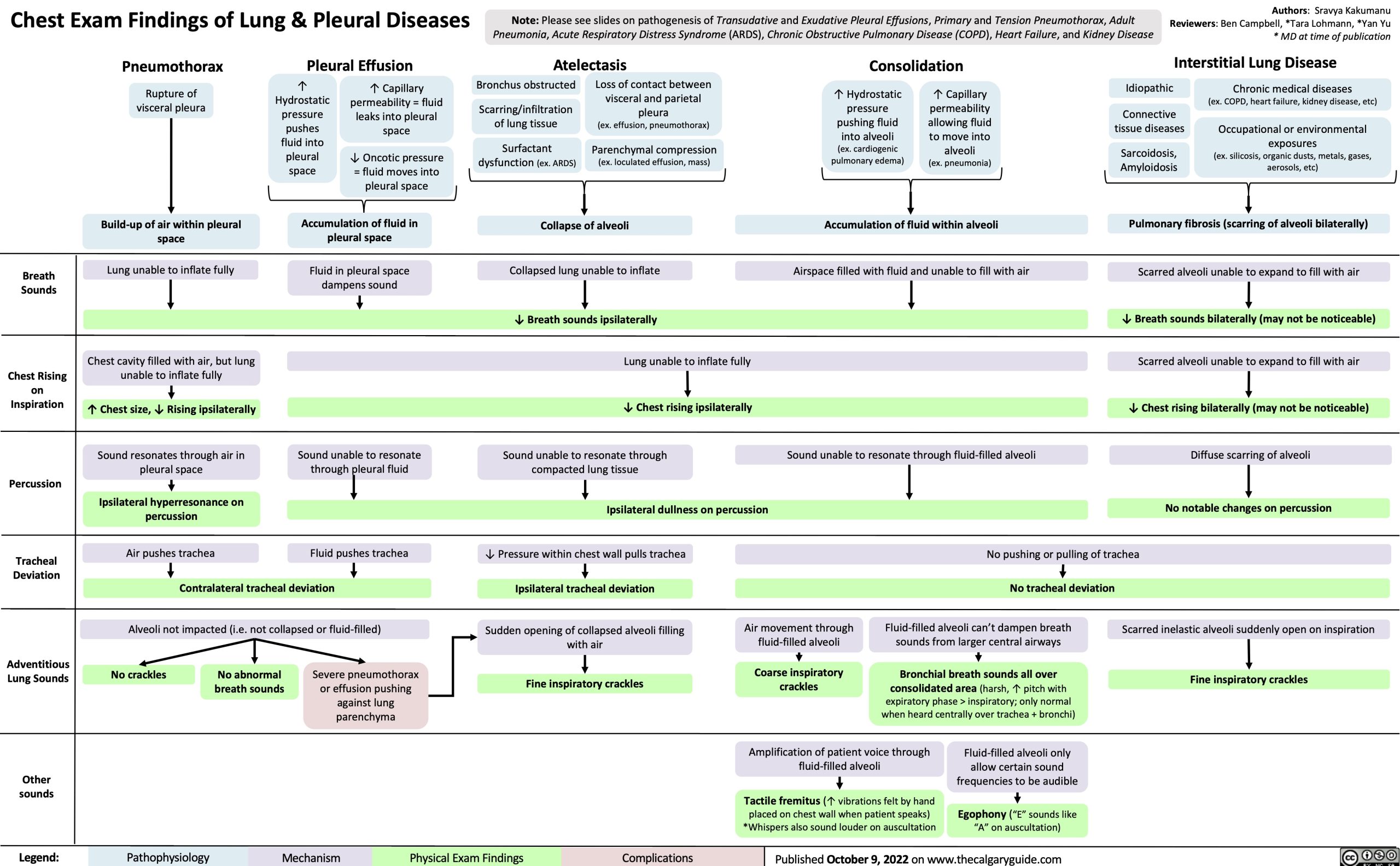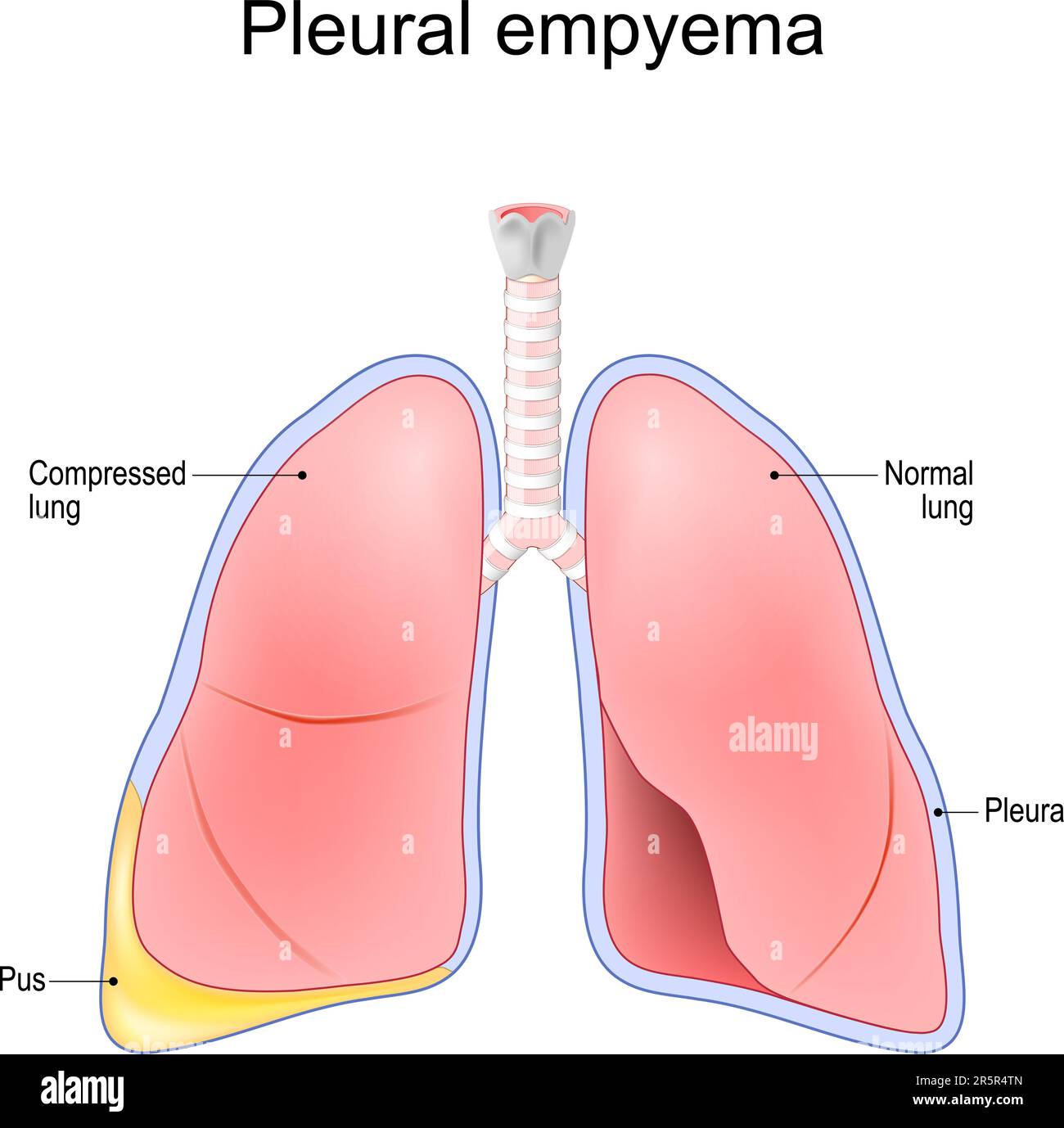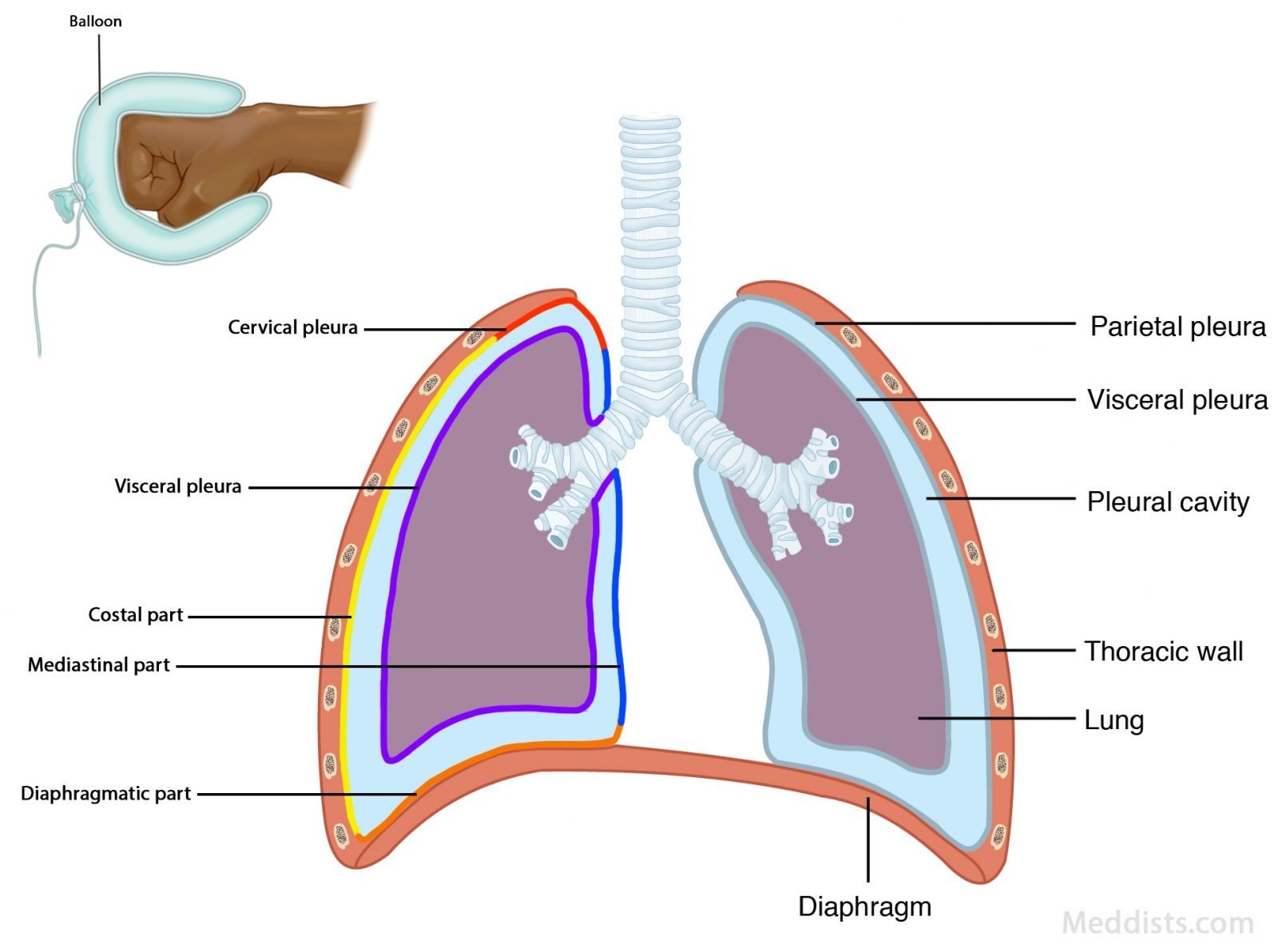Pleural And Pulmonary Decortication Surgery: A Comprehensive Overview - Surgeries that remove the thickened pleural lining surrounding the lungs are known as pleural decortication, whereas those that remove the thickened visceral pleura covering the lungs are known as pulmonary decortication.

Chest Exam Findings of Lung & Pleural Diseases | Calgary Guide - Source calgaryguide.ucalgary.ca
Editor's Notes: "Pleural And Pulmonary Decortication Surgery: A Comprehensive Overview" have published today date. The objective is to give readers a thorough background of pleural and pulmonary decortication surgery, covering everything from its history and evolution to its many applications and advantages.
We are aware that selecting the best treatment option for a certain medical condition can be difficult. We have created this "Pleural And Pulmonary Decortication Surgery: A Comprehensive Overview" guide to help target audience make the right decision after doing some analysis, digging information, and putting it all together.
Key differences between pleural and pulmonary decortication surgery
Pleural and pulmonary decortication surgeries are often performed to treat a variety of conditions, including:
- Empyema
- Hemothorax
- Pneumothorax
- Lung abscess
- Pleural effusion
- Pleural fibrosis
- Pleural thickening
- Pulmonary fibrosis
- Pulmonary artery hypertension
- Cor pulmonale
FAQ
This FAQ section addresses some common questions and misconceptions regarding pleural and pulmonary decortication surgery.
Question 1: What exactly is pleural and pulmonary decortication surgery?
Pleural and pulmonary decortication surgery is a surgical procedure performed to remove or strip away thickened, inflamed tissue (decortication) from the outer lining of the lungs (pleura) or the surface of the lungs (pulmonary parenchyma).

Pleural empyema. Normal lung and lungs after accumulation of pus within - Source www.alamy.com
Question 2: When is pleural and pulmonary decortication surgery recommended?
This surgery is typically recommended when other treatments have failed to alleviate symptoms or improve the underlying condition, such as empyema (collection of pus in the pleural space), recurrent pleural effusions (fluid buildup), or fibrothorax (thickening and scarring of the pleura).
Question 3: What are the different techniques used in pleural and pulmonary decortication surgery?
The surgical approach varies depending on the extent and location of the decortication required. It can be performed through an open thoracotomy (surgical incision between the ribs) or minimally invasive video-assisted thoracoscopic surgery (VATS).
Question 4: What are the potential complications associated with pleural and pulmonary decortication surgery?
As with any surgery, there are potential risks and complications, including bleeding, infection, damage to the lung or surrounding structures, and persistent pleural effusion. However, these risks are generally low when the surgery is performed by experienced thoracic surgeons.
Question 5: What is the expected recovery time after pleural and pulmonary decortication surgery?
The recovery time varies depending on the extent of the surgery and individual factors. Typically, patients can expect to stay in the hospital for several days and may require a chest tube to drain fluid from the pleural space. Full recovery may take several weeks to months, with gradual improvement in breathing and overall well-being.
Question 6: What are the long-term outcomes after pleural and pulmonary decortication surgery?
Most patients experience significant improvement in their symptoms and quality of life after pleural and pulmonary decortication surgery. Long-term complications are uncommon, but regular follow-up with a thoracic surgeon is recommended to monitor progress and address any potential issues.
This has been a brief overview of some frequently asked questions regarding pleural and pulmonary decortication surgery. For more information and personalized guidance, it is essential to consult with a qualified thoracic surgeon who can provide a comprehensive evaluation and discuss the most appropriate treatment options for your specific condition.
Please proceed to the next section for further insights into pleural and pulmonary decortication surgery.
Tips
Read Pleural And Pulmonary Decortication Surgery: A Comprehensive Overview for more information.
Tip 1: Understand post-operative care.
Adequate post-operative care is crucial for a successful recovery from pleural and pulmonary decortication surgery. This includes pain management, chest physiotherapy, and close monitoring of vital signs. By following the instructions provided by the healthcare team, patients can minimize the risk of complications and promote optimal healing.
Tip 2: Seek prompt medical attention for complications.
While complications from pleural and pulmonary decortication surgery are rare, they can occur. Patients should be aware of the signs and symptoms of potential complications, such as fever, chills, shortness of breath, and chest pain. If any of these symptoms develop, it is important to seek prompt medical attention to prevent serious consequences.
Tip 3: Follow up with the healthcare team regularly.
Regular follow-up appointments with the healthcare team are essential for monitoring progress and ensuring a complete recovery. During these appointments, the healthcare team will assess the patient's condition, review medications, and provide necessary guidance. Adhering to the follow-up schedule helps ensure that any potential issues are identified and addressed及时地.
Tip 4: Maintain a healthy lifestyle.
Maintaining a healthy lifestyle is highly beneficial for overall well-being and can support recovery after pleural and pulmonary decortication surgery. This includes eating a balanced diet, getting regular exercise, and avoiding smoking. By adopting healthy habits, patients can improve their overall health and promote a faster and more complete recovery.
These tips provide practical guidance for patients undergoing pleural and pulmonary decortication surgery. By following these tips, patients can enhance their recovery and improve their overall health outcomes.
Pleural And Pulmonary Decortication Surgery: A Comprehensive Overview
Pleural and pulmonary decortication surgery involves removing the thickened pleura or lung tissue. It aims to enhance lung expansion and restore normal respiratory function. Here are six key aspects of this procedure:
- Indications: Empyema, trapped lung, and post-traumatic conditions.
- Surgical Approach: Thoracotomy or video-assisted thoracoscopic surgery (VATS).
- Objectives: Remove thickened pleura (pleural decortication) or lung tissue (pulmonary decortication).
- Complications: Bleeding, infection, and lung injury.
- Prognosis: Generally good with improved lung function and quality of life.
- Advancements: Minimally invasive techniques (VATS) and robotic-assisted surgery.

Pleurae Pleural Cavity Pericardial Membrane Root Of Lung At Hilum - Source www.pixazsexy.com
These aspects highlight the importance of pleural and pulmonary decortication surgery in managing complex thoracic conditions. It requires a careful preoperative assessment, meticulous surgical technique, and close postoperative follow-up. The procedure can significantly improve respiratory function, alleviate symptoms, and enhance the quality of life for patients with severe pleural and pulmonary disorders.
Pleural And Pulmonary Decortication Surgery: A Comprehensive Overview
Pleural and pulmonary decortication surgery is a surgical procedure used to remove the thickened and scarred pleura (the lining of the lungs and chest cavity) and/or thickened visceral pleura (the lining of the lungs) that has been caused by various conditions, such as empyema, hemothorax, or trauma. The thickened pleura can impair lung function and cause shortness of breath, chest pain, and other symptoms. Decortication surgery aims to restore lung function and alleviate these symptoms.

Pulmonary Pleurae. Lungs Anatomy Stock Vector - Illustration of - Source www.dreamstime.com
The procedure involves opening the chest cavity and carefully dissecting the thickened pleura from the underlying lung tissue. In some cases, part of the lung may also need to be removed if it has been damaged or scarred. Decortication surgery is a complex and challenging procedure that requires specialized surgical skills and expertise.
The success of pleural and pulmonary decortication surgery depends on several factors, including the underlying cause of the pleural thickening, the extent of the disease, and the patient's overall health. The surgery can be performed as an open procedure through a large incision in the chest or as a minimally invasive procedure using video-assisted thoracoscopic surgery (VATS). The choice of surgical approach depends on the individual patient's circumstances and the surgeon's expertise.
Pleural and pulmonary decortication surgery can be an effective treatment for patients with thickened pleura that is causing significant symptoms. The surgery can improve lung function, reduce pain and shortness of breath, and improve overall quality of life. However, it is important to note that the surgery is not without risks and potential complications, such as bleeding, infection, and damage to the lung tissue. The risks and benefits of surgery should be carefully considered before proceeding with the procedure.
In conclusion, pleural and pulmonary decortication surgery is a complex and challenging procedure used to treat thickened pleura that is causing significant symptoms. The surgery can improve lung function and quality of life, but it is important to be aware of the potential risks and complications before proceeding with the procedure.
Conclusion
Pleural and pulmonary decortication surgery is a complex and challenging procedure that can be used to treat thickened pleura that is causing significant symptoms. The surgery can improve lung function and quality of life, but it is important to be aware of the potential risks and complications before proceeding with the procedure.
Further research is needed to improve the outcomes of pleural and pulmonary decortication surgery and to develop new and less invasive treatment options for patients with thickened pleura.
